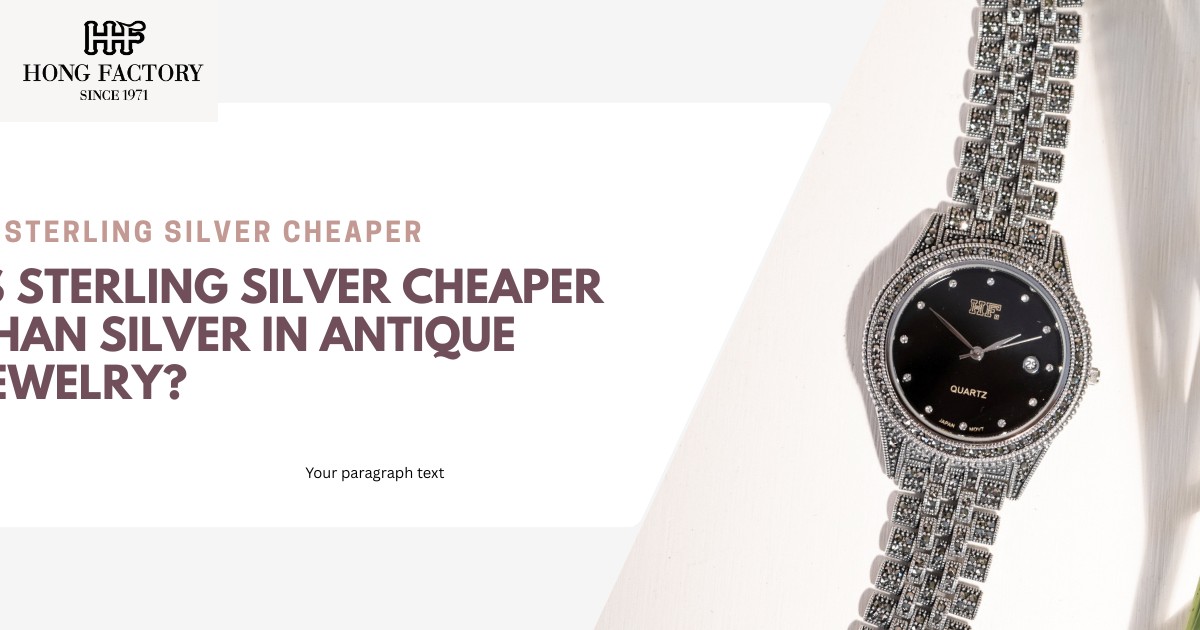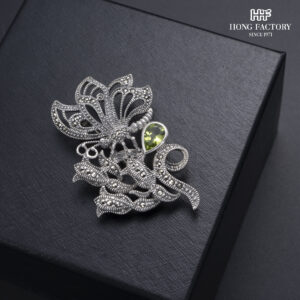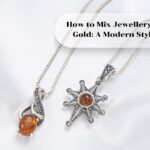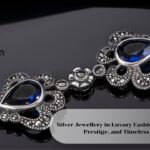
Antique jewelry holds a unique charm: every piece tells a story of history, craftsmanship, and artistry. Among antique treasures, silver jewelry stands out for its timeless beauty and cultural significance. However, when it comes to collecting or purchasing antique pieces, many wonder: is sterling silver cheaper than pure silver in the antique market? The answer depends on several factors including composition, rarity, age, and craftsmanship. marcasite jewelry
Understanding Sterling Silver and Fine Silver in Antique Jewelry
Before comparing prices, it’s essential to understand the two main types of silver used in antique jewelry. Fine silver (99.9%), also called pure silver, is softer and more malleable. It was commonly used in ceremonial or decorative items but less frequently in everyday jewelry due to its delicate nature.
Sterling silver (92.5% silver and 7.5% copper), on the other hand, became popular from the 19th century onward. It provided the perfect balance between strength and beauty, making it ideal for rings, brooches, and lockets that could withstand daily wear. This blend’s durability made it a preferred material for jewelry houses in Europe and the United States during the Victorian, Edwardian, and Art Deco eras.
Is Sterling Silver Cheaper in Antique Jewelry?
So, Is Sterling Silver Cheaper than fine silver in antique jewelry? Generally, yes but not for the reasons you might expect. While sterling silver contains less pure silver, its antique value often depends on design, craftsmanship, and provenance rather than metal purity alone.
In most cases, sterling silver jewelry is cheaper than fine silver pieces of the same weight because of its lower silver content. However, certain sterling silver antiques from famous designers or historical periods can command prices far higher than pure silver pieces. This means that while sterling silver is typically less expensive in raw material value, it can still be highly valuable as a collectible.
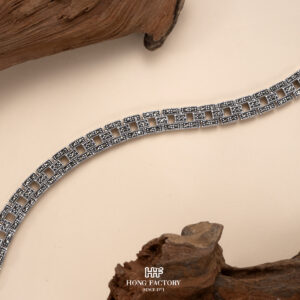
What Determines the Value of Antique Silver Jewelry
The value of antique jewelry whether sterling or pure silver depends on several factors beyond metal composition:
- Craftsmanship and Design: Intricate handwork, filigree, or repoussé techniques significantly increase an item’s value.
- Era and Style: Victorian, Edwardian, and Art Nouveau sterling silver pieces are highly sought after by collectors.
- Maker’s Mark or Origin: Silver jewelry made by renowned artisans or jewelry houses (such as Georg Jensen or Tiffany & Co.) carries premium value.
- Condition: Well-preserved antique sterling silver maintains its brilliance and structural integrity better than fine silver, which softens and warps over time.
- Rarity: Limited-edition or custom-made pieces may be worth more regardless of whether they’re sterling or fine silver.
These factors often outweigh the price difference between sterling and fine silver, especially in the antique market where historical context enhances value.
Why Sterling Silver Dominates Antique Jewelry Collections
Sterling silver was the material of choice for most 19th- and 20th-century jewelers. Its versatility allowed for detailed engraving, intricate gemstone settings, and elegant patterns that endured generations. Because of this, the majority of antique silver jewelry found today including brooches, lockets, and bangles is made of sterling silver rather than pure silver.
Its combination of durability and luster ensured that these pieces survived decades of wear while retaining their aesthetic appeal. Collectors also value sterling silver’s hallmark system, where stamps like “.925,” “Sterling,” or maker marks help authenticate the item’s origin and date.
Fine Silver in Antique Jewelry
Fine silver antique jewelry tends to be rarer, especially in wearable forms. It was used primarily in ceremonial pieces, ornate pendants, and decorative accessories rather than everyday jewelry. Its softness made it prone to bending or scratching, limiting its long-term use.
As a result, antique fine silver jewelry often appears in museum collections or among elite collectors who value purity over practicality. Because of its rarity and historical prestige, certain fine silver antiques can fetch higher prices but these are exceptions rather than the rule.
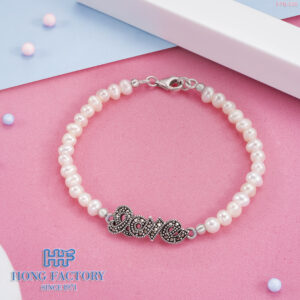
Pricing Trends in Antique Markets
When comparing sterling and fine silver in antique markets:
- Sterling silver is generally more affordable, both in material cost and resale value.
- Fine silver may command higher prices only in specific cases involving artistry or cultural importance.
For example, a sterling silver Art Deco bracelet with intricate engravings and gemstones could sell for more than a plain fine silver bangle from the same era. This shows that artistry and design hold greater influence over value than metal purity alone.
Why Collectors Love Sterling Silver Antiques
Collectors and jewelry enthusiasts often prefer sterling silver antiques because they strike the perfect balance between authenticity, beauty, and durability. Unlike fine silver, which can easily deform, sterling silver retains its shape and structure over decades. Its natural patina also adds character a feature highly prized in vintage and antique jewelry.
Moreover, sterling silver’s affordability makes it accessible to a wider range of collectors, allowing enthusiasts to own historic pieces without exorbitant cost.
Authenticity and Hallmarks
Identifying authentic antique sterling silver jewelry is key to understanding its value. Look for hallmarks such as “.925,” “STERLING,” or symbols that indicate origin and maker. British antiques, for example, often feature hallmark stamps representing the city of assay, year, and silversmith. Fine silver pieces, when marked, may display “.999” or “Fine Silver.”
Knowing these markings helps buyers distinguish between genuine antiques and reproductions, ensuring fair pricing in the market.
Affordable Heritage with Lasting Value
So, Is Sterling Silver Cheaper Than Silver in Antique Jewelry? Yes in terms of raw material cost, sterling silver is cheaper than fine silver. However, its true worth in the antique market often exceeds its purity, driven by artistry, history, and cultural significance.
Sterling silver antiques offer collectors an ideal blend of affordability and heritage. Their beauty lies not just in their silver content but in the craftsmanship and stories they carry through time. Whether you’re a seasoned collector or a first-time buyer, sterling silver antique jewelry remains one of the most accessible and meaningful investments in the world of vintage adornments.
